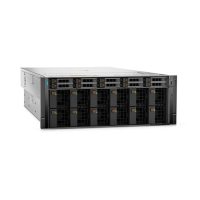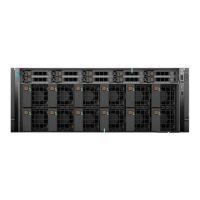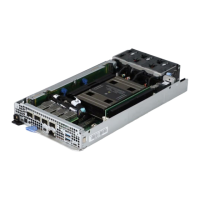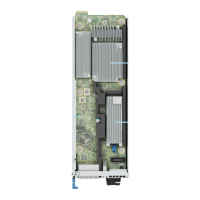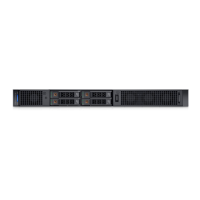System configurations - Rear view for PowerEdge
XE8640
Figure 4. Rear view of XE8640 system
Table 4. Rear view of the system
Item Ports, panels, or slots Icon Description
1 BOSS-N1 N/A There are two M.2 connectors that are populated on the board and
support two NVMe drives for boot.
2 NIC Ports The NIC ports that are integrated on the LOM card provide network
connectivity which is connected to the system board.
3 PCIe expansion card riser 1
(R1)
N/A The expansion card riser enables you to connect PCI Express
expansion cards.
4 OCP NIC port (optional) N/A The OCP NIC card supports OCP 3.0. The NIC ports are integrated
on the OCP card which is connected to the system board.
5 System Identification (ID)
button
The System Identification (ID) button is available on the front and
back of the system. Press the button to identify a system in a rack
by turning on the system ID button. You can also use the system ID
button to reset iDRAC and to access BIOS using the step through
mode. When pressed, the system ID LED in the back panel blinks until
either the front, or rear button is pressed again. Press the button to
toggle between on or off mode.
NOTE: If the server stops responding during POST, press and
hold the System ID button for more than five seconds to enter
the BIOS progress mode.
NOTE: To reset the iDRAC (if not disabled on the iDRAC setup
page by pressing F2 during system boot), press and hold the
System ID button for more than 15 seconds.
6 iDRAC dedicated port Enables you to remotely access iDRAC. For more information,
see the Integrated Dell Remote Access Controller User's Guide at
www.dell.com/poweredgemanuals.
7 USB 2.0 port The USB port is 4-pin, 2.0-compliant. This port enables you to
connect USB devices to the system.
8 USB 3.0 port The USB port is 9-pin and 3.0-compliant. This port enables you to
connect USB devices to the system.
12 Dell PowerEdge XE8640 system overview

